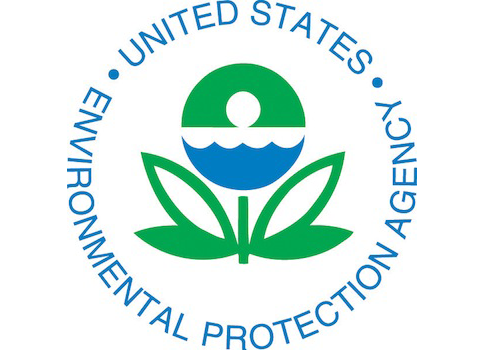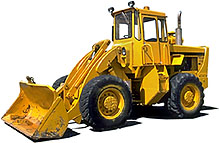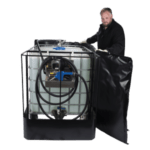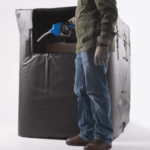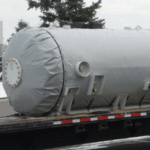Due to the increase in emissions regulations, diesel exhaust fluid (or DEF) has been used in large highway vehicles powered by Cummins, Detroit Diesel, Mac, and Paccar diesel engines since 2010. This has helped to reduce the pollution emitted by trucks and buses by as much as 90%. Did you know that these same regulations are set to extend beyond highway vehicles? In fact, they already have.
The EPA and DEF
DEF is an additive used in selective catalytic reduction (SCR) systems. It contains urea and deionized water, which is used to create cleaner emissions. The need for such a product in vehicles started in 2001 when the EPA (The U.S. Environmental Protection Agency) announced that all large diesel-run trucks and buses would have to meet new stricter diesel fuel standards.
Manufacturers started using SCR in order to reduce the pollutants caused by diesel-exhaust emissions. According to the EPA, such pollution from diesel exhaust includes: soot or particulate matter (PM), Oxides of nitrogen (NOx) which contributes to the production of ground-level ozone (smog) and acid rain, Hydrocarbons (HC), Carbon monoxide (CO), and other hazardous air pollutants (HAPs) and air toxins.
This mandate began with all 2010 vehicle models moving forward. Ever since this time, SCR systems have been the norm for long-haul trucks and commercial buses. However, the EPA didn’t stop there. In the following years, the regulation began applying to other vehicles and equipment as well.
What year did diesel exhaust fluid start?
SCR was first patented in the United States in 1957. Japan began using SCR to reduce emissions in power plants in the 1970’s. Diesel-powered vehicles began using SCR systems in 2004 in Japan, 2005 in Europe, and 2010 in the USA. Some companies used other methods for many years, but now nearly all diesel-powered vehicles are using SCR to reduce emissions.
Using SCR systems and DEF introduces many more components into a vehicle. Having more components allows for more failure modes and the potential for lower reliability. Along with having more components there is the need for more maintenance to keep the system working properly, and more time is required to fill the DEF tank. The systems also add weight which reduces payload capacity.
When compared to other methods of NOx reduction, using SCR and DEF has lower emissions, improved fuel economy and increased power. Using SCR and DEF allows manufacturers to make engines perform how they want and then use SCR to clean up the exhaust afterwards. This also provides for very clean exhaust, making the air cleaner and safer to breathe, especially when used in enclosed areas.
How emissions regulations affect other industries
As of 2014, the regulation started applying to off-highway vehicles too. Off-highway vehicles include anything operating an industrial or large-scale diesel engine. This would include things like generators, construction vehicles (dump trucks, backhoes, bulldozers), and agricultural equipment like tractors, combines, balers, and others. As you can imagine, such regulations have spread the need for good DEF management to industries that hadn’t previously considered it.
What’s more, the EPA’s plans required the same of the railroad industry. By 2015, trains and other large rail equipment incorporated SCR systems and had reason to plan for the proper storage and management of DEF. In the following year, 2016, the marine industry also had to comply with all the same guidelines.
DEF Is Now a Precious Commodity
Thanks to the EPA’s move to reduce the pollution footprint these vehicles have on the air around us, we can all breathe a little easier. In addition to this, the EPA’s decision has also made diesel exhaust fluid a precious commodity. Any company operating large industrial vehicles also needs to be responsible for large amounts of DEF.
DEF Solutions for businesses
Simply storing the quantity of DEF needed to run a diesel fleet can be challenging enough, but the concern doesn’t only involve space. Whether your business requires agriculture heating solutions or freeze protection, Powerblanket has products that will get the job done. Because diesel exhaust regulations now apply to agricultural and construction vehicles, finding solutions to protect and store your DEF storage will be a top priority. When storing DEF, you also must make sure it maintains the temperature needed to function properly once it’s in the SCR system.
DEF that is exposed to sunlight or extreme temperatures can degrade its quality at a faster rate. DEF is at its best viscosity between 12-72 degrees Fahrenheit. To keep DEF in its optimum temperature range, you’ll need a solution that can insulate your product, preventing freezing or overheating.
DEF tank heaters offer freeze protection by enclosing the entire tote system and featuring a top flap for easy access. The heaters also have temperature control to prevent overheating, keeping your DEF and pump housing stored correctly with little effort on your part. Even when temperatures drop well below freezing, you can have peace of mind knowing that it’s safe to use down to -20 degrees Fahrenheit. If your business requires a little extra protection from harsh climates, Powerblanket’s Xtreme line has you covered.
Keep in mind that with these regulations, managing your DEF storage effectively becomes imperative to operational consistency. In the end, caring for your DEF will directly affect your bottom line. By using the right products, you take the hassle out of storage solutions, saving your energy and money for other important business tasks.
The Powerblanket DEF tank heater is the most efficient and effective way to heat and store diesel exhaust fluid.


